Ten biggest threats to business

A global survey has given us a picture of what exactly the biggest challenges are for business managers today. Across categories and regions the message is the same – there are half a dozen particular issues companies are feeling pressured by, but don’t know how to deal with.
Those clever marketers at Ernst & Young have come up with a catchy way of showing what we’re all facing – they call it the Risk Heat Map.

Businesses of every size are facing the same big problems. Fortunately current research shows how your business can turn this time of rapid change to your advantage.
The real insight for business owners in this picture is that while managers recognise these risks, as we look across the Y axis we realise most don’t know how to deal with them. These challenges are the consequence of a new paradigm. There’s an elephant in the boardroom – it’s right there in the middle, emerging technologies. Yes, it’s the Internet.
Drivers of business change
The Internet has changed everything. For the first time in the history of commerce, we now have true globalisation thanks to the transparency the Internet gives customers. People can now find the truth about any product or service in just a few clicks, in the privacy of their home or using a smart phone on the shop floor.
In the recent past there was still an advantage in being big – a manufacturer could configure a product and control its availability by region, a retailer could price a product depending on the suburb. Today with instant transparency, a customer can pick and choose from what’s on offer anywhere in the world.
Brands can no longer rely on any competitive advantage from tradition, size or resources. Rather, as Boston Consulting says – “in a world of change, the spoils go to the nimble”. The key to success is not just recognising the drivers of change, it’s ACTING on them.
The biggest risk to any business today is inaction. UNO has a proven formula for growing challenger brands. We can help you start today, risk free.
Email gm@unomarcomms.com for an outline of our process.
Read MoreWhat is beauty in commercial art?

“We have a duty to keep ads beautiful” said Craig Davis, co-chairman and chief creative officer with Publicis Mojo Australia and New Zealand in Campaign Asia, yesterday.
I respect Craig, we pitched against each other for The Rocks account decades ago when we were young and radical and creative directors of competing boutique Sydney agencies. I won. The next year I pitched against him again, for Sydney Water. He won.
Personally I don’t think advertising is art. It’s Commercial art, capital C. The latest CEO survey published in the same magazine reports 80% of the region’s CEOs think marketing people “are in La-La Land”.
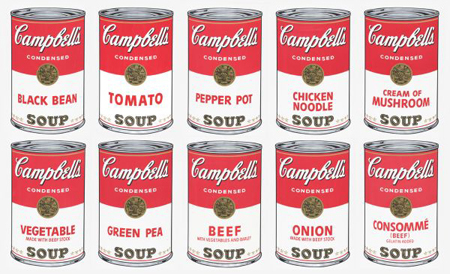
Craig’s musings on beauty in advertising aren’t going to change those perceptions. He is concerned “talent, craft and significance of ideas are being pushed aside by the desire to save time and money.” Craig makes a point worth taking the time to consider – we have all seen examples of the office junior being asked to whip up an ad because they know how to use clip art and can have it done in no time. Or the manager’s nephew is good with computers so he can build the corporate website for less.
All of this is being driven by the changes enabled by the Internet, “the flip side of the new digital meritocracy is that there’s an inordinate amount of noise generated” observes Craig.
He reminds admen “clients pay us to deliver results.” Hear, hear I say.
Then he returns to his point that “at its best, advertising is beautiful, but in the absence of creativity, it is just pollution. In the words of John Keats: Beauty is truth, truth beauty—that is all ye know on earth, and all ye need to know.”
Advertising that works is advertising that delivers a ROI
Business owners are more inclined to see beauty in numbers, like low cost per lead, and high rates of conversion. The fine balance of marketing communications is understanding how to use creativity to commercial advantage.
There is undeniable beauty in identifying a genuine human truth and expressing it to an audience in a way they find appealing. But let’s not talk about beauty for its own sake, lets talk about craft. Both in the craft of storytelling and execution, for business sake.
A century ago Dadaists like Marcel Duchamp challenged the protectors of traditional painting with the question “What is art?”
Before you invest in advertising, social media marketing or any program to grow your business, ask yourself, is this commercial art for the 21st Century? Is the execution well enough crafted to connect with your audience and leave the desired impression? Most importantly, will it give you the best return on investment?
It’s a commercial decision after all, not a beauty contest, don’t you think?
Why CEOs like Facebook yet fear it

The 2012 IBM global CEO study is just out. It once again confirms management is often aware of what needs to change, yet fear acting on their knowledge.
"CEOs need social media, but many fear it" – IBM
The world’s CEOs believe that in the next five years social media will push past websites, call centres and channel partners to become the No. 2 way to engage customers (after face-to-face communications).
However fear of change is preventing most from actually actioning a Facebook strategy. Many will miss capitalising on this inevitable trend to more agile competitors. Some fears are justified, there is no doubt there is risk involved with social media. Risk isn’t just bad ideas like CommBank’s terrorist Olympics viral video.
Advertisers are now liable for users' Facebook comments

Australia's digital industry is up in arms about a ruling from the ad watchdog, which determined a brand's Facebook page is an ad platform with all its material - including user-generated content - liable under the AANA code.
A recent ruling from the Advertising Standards Bureau (ASB) in a complaint against Diageo said it considered Facebook to be a marketing communication tool. The decision changes the landscape of social media advertising with brands liable for content generated by consumers.
In its ruling, the ASB wrote: “The Board considered that the Facebook site of an advertiser is a marketing communication tool over which the advertiser has a reasonable degree of control and could be considered to draw the attention of a segment of the public to a product in a manner calculated to promote or oppose directly or indirectly that product."
Social media advertising regulations and marketing your business
“The Code applies to the content generated by the advertisers as well as material or comments posted by users or friends.”
This is yet another example of how our regulatory frameworks are anachronistic in the era of the Internet. This new world of social media is merely a decade old, yet regulators like ASB are employing codes written in the steam age when ads were only mass distributed by printing press. Publishers had control of what letters to the editor were published with an eye on libel. But the pace of public postings on Facebook makes such a process for an editor of a business Facebook page less that of a publisher, more one of the town crier who invites people to the town square but can’t predict what the crowd will yell about loudest.
Right now the judiciary has similarly lacked an ability to adapt as the public circumvents contempt of court rules and out accused on Facebook, passing collective judgement before a trial. No blurred pictures of the accused’s face like in the press or on TV. Think the Kings Cross king hitter, perhaps fuelled by Diageo products. Lets see a post on a liquor brand’s Facebook about the next alcohol induced murder and ponder the consequences. It's going to happen, irrespective of what the ASB stipulates.
So if CEOs are going to increasingly use Facebook for a dialogue with prospects, we will need to be extremely diligent to keep on the right side of the law, irrespective of how sensible we think regulations are today.
Learn from Darrell Lea's Rocky Road

Darrell Lea's new Perth concept store opened in March. Too late to keep the administrators from the door?
Most business leaders know the 4 Ps from marketing 101. As Darrell Lea’s predicament shows, in today’s marketplace where change is underway at an increasingly blistering pace, keeping those easily understood basics working in your favour is becoming increasingly difficult. Here they are one by one:
Product
Mega trends like multiculturalism, gourmetisation of food products, better for you choices, and social issues like fair trade today shape what we choose to eat.
In the past it was enough to make minor adjustments to products and expect a sales lift simply by placing a NEW IMPROVED flash on the wrapping. For the last couple of decades there’s been little in the way of product innovation at Darrel Lea. As well intentioned as they may have been, small line extensions like fruit flavoured liquorice haven’t been enough to stop the sales decline.
Businesses have to be wary of who they entrust to give them independent counsel. Darrell Lea invested in research that resulted in a new tag line, “85 years of creating sweet magic”. One can argue this simply reinforced a backward looking management mindset.
Today customers are rewarding brave leaps forward in categories. As Max Brenner’s website proclaims, “Chocolate is not just about taste” it’s also about fashion. From Mexican spicy chocolate and hot chocolate shots to chocolate soufflés and Tiramisu, Australians are spending more money on chocolate than ever before as brands can come up with new adventurous ways to tempt them.

Challenger brands aren’t just new companies doing new things, old companies doing things differently are also being rewarded. Australia’s oldest chocolate maker/retailer, 97 year old family business Haigh’s has kept customers coming back and continues to entice new ones with adventurous new takes on chocolates.
Promotion
Cutting back on advertising for a short term cost saving is proven to come at a long term significant loss. Once a significant investor in advertising, Darrell Lea has been absent from mass media marketing for several years. It takes many years to build a brand and nanoseconds to damage one in social media. It pays to treat advertising as a compounding investment that pays an annuity in return.
Price
Too often price is only mentioned in the same sentence as promotion. It is in fact a two way lever. A 4 for $15 offer on Rocklea Road isn’t going to entice a new customer, it simply reduces the margin on a sale to an existing one.

Whereas Lindt, once considered a niche special occasion brand, has grown by offering a variety of chocolate balls across a range of pricepoints and product sizes that still maintain a premium.
Place
The Internet is making everyone reconsider where is the best place to make a sale? Ecommerce may not be right for a product that will melt in the mail, but is owning a shop the best alternative? Why own 63 shops when most chocolate sales are through Coles and Woolworths and convenience stores?
If you are going to have a retail outlet, it needs to have a good reason to justify the high overheads. Darrell Lea’s average over the counter sale is around $11 per customer. You’d need a lot of footfall to justify the rental on the King and George Street Sydney store. On the opposite corners are the eye candy Apple store and Louis Vuitton, where the products cost thousands (and are never discounted).
Challenger brands understand stores are the new 3D interactive ad medium. They are all about theatre and entertainment. Max Brenner has the theatre of their liquid chocolate Willy Wonka-esque stores.
Other retailers realise the store is simply the best way to gather new customers details for database driven online sales. The objective of the shop front is to entice prospects in and the brief to staff is to start a long-term relationship. For instance, banks lose money on physical branches, but haven’t found a better way to gain new customers. Citibank’s new branches in Hong Kong have been designed by the same architects as the Apple Stores. You can’t make a deposit at one of these new gleaming white banks with couches and interactive screens, you can have an espresso made by a barrista who is briefed to cross sell financial products to you.
How to stay competitive
Many market leaders are vulnerable to the threat that comes from failing to re-look at their entire business models. Simply reviewing the 4 Ps from the perspective of traditional wisdom will no longer ensure a business stays competitive. Market leaders that fail to embrace change, not just across product and service but entire systems and relationships, are increasingly less profitable than smaller challenger brands. There are a number of proven tools and techniques to help businesses rapidly adapt and trial new ways, feel free to ask us about some of them.
Boston Consulting has formally identified what savvy marketers know is the driver of business growth today:
In a world of change, the spoils go to the nimble*
*Martin Reeves and Mike Deimler, Boston Consulting Group,
Harvard Business Review July-August 2011

Founded in Adelaide by Alfred E Haigh in 1915, Australia’s oldest family-owned chocolate maker/retailer has a history of embracing change.
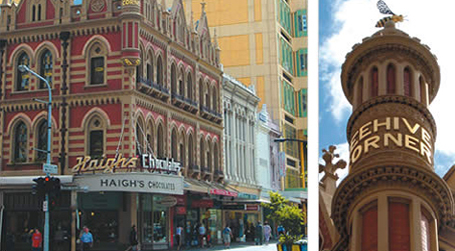
In the 1950s grandson John learned from Swiss masters Lindt and Sprungli and introduced European fine chocolate making to Australians. The current fourth generation Haigh family management preside over a business that represents barely 1% of Australia’s chocolate sales. Yet I would venture to say they are very profitable.
By continuing to innovate Haigh's continues to prosper as a challenger brand
Their award-winning Australian Collection was launched in 2003, with six native food centres including quandong, macadamia nut and honey, lemon myrtle and wattle seed. And as Australian’s have become more sophisticated in food tastes, Haigh’s have kept up with such adventurous chocolates as a South Australian truffle duet made with premium wines from the State’s wine regions.
Haigh’s environmental policies and sponsorships are just one indicator of how in touch this old business is with today’s consumer.
Last August at the Family Business Australia Conference, Joint Managing Director Alister Haigh told me they were ready for the next big change - online sales. The only sticking point is developing a delivery method that can guarantee the integrity of their heat sensitive product.
Following the biggest fine in UK finance history, it’s timely to look again at Barclays’ Big Ad

Barclays agreed to pay a record $442 million fine for rigging the London interbank offered rate last month. The scandal has cost the jobs of Barclays CEO Robert Diamond (below), Chairman Marcus Agius, and Chief Operating Officer Jerry Del Missier.
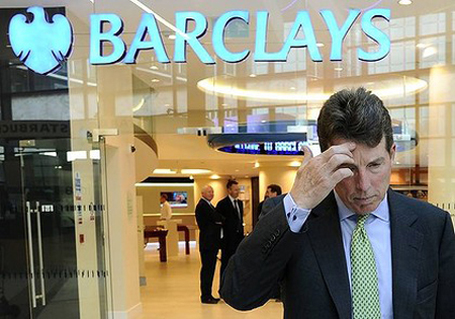
It pays to consider the future consequences of a single-minded marketing tagline. For Barclays, “We’re Big” just doesn’t cut it anymore.
If you're a marketer, Read This Or Die...

A friend sent me a YouTube link via Facebook – a comedy sketch by Bill Hicks, where the comedian asks anyone in the audience that’s in advertising or marketing to “kill yourself".
I was reminded of my profession’s tenuous grip on social acceptance when this week leading researchers Roy Morgan released their latest annual survey of how Australians rate the professions: ad people are still near the bottom, just above car salesman.
There is still hope for Admen and marketers – it’s about having conversations at the board level that explain in understandable terms how we can add value. This week McKinsey Quarterly published a checklist of 5 things that will help business managers get the best ROI from their marketing.
So for those who rate the wisdom of McKinsey's consultants, here in my words are the 5 tips that will make any CEO take you seriously.
1. What exactly influences our consumers today?
Mass media marketing to the masses is oh so yesterday. Thanks to the Internet, shoppers now consider options at more times in more ways, from reading online reviews to comparing prices when in-store using their mobiles. Once someone has bought something, they potentially become a reviewer themselves.
So how do you get into the new consumer's head? You can use anything from traditional research to online polls or social media tracking to get a better understanding of what consumers are now thinking about a category. The key is to be open minded about what you learn and have a management team willing to let go of accepted wisdoms.
2. How well informed (really) is our marketing judgment?
It was only a decade ago when traditional advertising was all that mattered. Marketers who new their stuff could make decisions safe in the knowledge what always worked in the past probably would tomorrow. And planned accordingly. Today you have to be able to recognise signals of change, and act on them. This means managers have to move out of their comfort zones and hypothesise, test new ways, then measure, analyse and adapt. Again and again. In McKinsey’s words there has always been a a need to define a “clear relationship between marketing spending and business results”. Today it has shifted from “should we be spending on marketing at all?” to “what’s the optimum marketing spending needed to hit our targets?”
3. How are we managing financial risk in our marketing plans?
Successful marketing communication takes hitting the right audience with the right message at the right time. The difference today is the targets are increasingly individuals and they are moving faster than ever. Traditional mass media allows advertisers to minimise risk by using metrics based on years of surveys that measure frequency and impact of a particular medium. Not so now. With today’s new media “influence can shift rapidly, and there is little accumulated experience about which messages work, when marketers should apply them, how they can be scaled, or even whom they influence”.
Measurement and risk reduction today comes from a closer relationship between sales and marketing and the channel. One of our clients has found scan data has new meaning now it can be overlaid with pre and post campaign brand tracking and the incredible analytics available using Shopperpedia.
4. How are we coping with added complexity in the marketing
organisation?
If you think it’s hard to keep up now, it’s only going to get harder faster. McKinsey's unsurprisingly suggest “you’ll require a number of specialists. You can’t get the skills and knowledge you need in just one person, and you’re not likely to get everything you need internally”.
5. What metrics should we track given our (imperfect) options?
At this point McKinsey goes into a whole grab bag of consultant speak. At UNO we think it best to get back to business basics – success should be measured by profit, not volume of sales or market rank. A business is successful when it can compete on more things than just price. And it knows it’s a real challenger brand when staff and partners are aligned and customers are referrers.
Now if you’re in advertising or marketing and you can’t get your head around the idea you have to change to survive, take a couple of minutes to laugh out loud as Bill Hicks encourages you to kill yourself
Where the smart budgets are being spent...Social Media
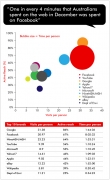
Have you noticed over the last decade that just about anything that isn’t nailed down has been digitised. Today we can access nearly everything from anywhere on anything – from getting the news on a tablet, trading shares on a mobile or accessing software services from the cloud. Plumbers are relatively safe, but most other businesses have to change.
The difficulty for business managers though is not just deciding how to make the change to digital, but how to make money out of it...
Pew Research Centre in the United States found that digitisation is burning money
Newspapers lost $10 in print ad revenue last year for every $1 they gained online. Just five companies, none of which existed a couple of decades ago are now taking 68% of online ad revenue: Google, Microsoft, Yahoo, AOL and Facebook.
Marketers know that they need to integrate traditional mediums with digital. Few businesses actually do – and some still think online is primarily for brands with young customers.
Businesses may be surprised to discover that the place where Australians spend the most time online, is also the most popular with women 25-45 years old.

The papers continue to spend money on journalists and creating the content, while these new companies continue to grow their revenue off the papers’ labours. Now because of their growing databases, fuelled by an understanding of people’s behaviour and preferences gathered from social media use, the digital intermediaries can now target ads more precisely than the old publishers.
The things we can now do on Facebook are incredible. In the past only advertisers who could afford to buy expensive data and research could precisely target their consumers. Now any advertiser can pretty well plan as effectively as the global giants by tapping into the growing wealth of intelligence of the social media technologists.
The Pew report says: “Two trends in the last year overlap and reinforce the sense that the gap between the news and technology industries is widening. First, the explosion of new mobile platforms and social media channels represents another layer of technology with which news organisations must keep pace. Second, in the last year a small number of technology giants began rapidly moving to consolidate their power by becoming makers of 'everything' in our digital lives. Google, Amazon, Facebook, Apple and a few others are manoeuvring to make the hardware people use, the operating systems that run those devices, the browsers on which people navigate, the e-mail services on which they communicate, the social networks on which they share and the web platforms on which they shop and play. And all of this will provide these companies with detailed personal data about each consumer.”
Business journalist Leon Gettler points out “Newspaper groups like Fairfax are the canaries in the coal mine for other industries facing similar challenges, from book shops and publishing to health care, industries where barriers to entry are low and where information is the main product. The trend to digitisation will accelerate with 'Generation C', people born from 1990 on who expect to be constantly connected through every possible device now entering the workforce, and with costs of computing and technology equipment dropping.”
“In every organisation, from media to retailers like David Jones, Myer and Harvey Norman, the biggest challenge always comes down to the tension between those who advocate a more aggressive approach and those aligned with legacy traditions, those who want to go fast and those who want to slow down.”
Adaptability: the new competitive advantage
As the pace of change accelerates, adaptability becomes the new competitive advantage. Long established leaders like Kodak, Borders and Fletcher Jones are a lesson in what management can expect if they don’t change their business model to integrate digitised marketing with their traditional methods.
Sources: Leon Gettler, Business Spectator, 28/3/12
Pew Research Centre, How Newspapers Are Faring Trying to Build Digital Revenue, 5/3/12
Why are marketers using Smartphones today?

The answer is in the numbers, and is a pointer to the next big thing.
Google researched 300,000 people around the world to find out their Smartphone use. Now as Australian marketers we can compare and contrast markets.
Number 2 for Smartphones in the world
Australia is now ahead of the US, UK, and Japan.
Average Smartphone under 12 months
Most of Australia’s Smartphones were purchased in the last 12months. We’ve gone from the back of the pack to the second highest penetration of this technology in the last year. Every month 1-2% of the entire population of Australia buys a Smartphone.
81% do it at home
More Australians used their Smartphones at home during the past 7 days than out – just 66% use them on the go.
50% like to watch
Almost 1 in 2 use their Smartphone while watching TV, while 1 in 3 use Smartphones and another Internet-enabled device at the same time. Talk about adult ADHD media consumption.
Smartphones are good for business
49% use their Smartphone to research and then call businesses – and 45% visit a business they’ve found using their Smartphone.
Aussies are obsessed with real estate
The stats confirm what we’ve all known from dinner party conversations – 1 in 5 Australians surveyed had looked for an apartment or house with their Smartphone – that’s 33% higher than the US or UK.
40% search daily
2 in 5 of Australian Smartphone owners use mobile search daily, that’s more than the UK or Germany and almost as high as the number who use desktop search daily.
The number of queries about retailers made via mobile devices has jumped 220 per cent year on year, and is now about 25 per cent of all queries.*
App, app and away
Australian survey respondents had 25 apps on average per Smartphone, Vs 23 in the US & UK. We’re not just talking free apps; Australians averaged 8 paid apps per phone.
TV or not TV?…
1 in 5 Aussie Smartphone owners would rather give up their TV than their Smartphone.
Better than sex?
1 in 3 say so according to a Telenav survey, that’s how many would choose their Smartphone rather than sex.

Now you’re up to speed with the omnipresence of mobile you’ll need to start thinking about how you can extend your online activity beyond a website that is viewed on a PC.
But wait, there’s more. Nothing stands still nowadays; to keep up you also need to be thinking of how to stay ahead of the competition.
So what’s next?
In just a year Australians have learnt to surf the web, send emails and watch movies on a Smartphone. Now consumers are moving to tablets because they are more convenient than laptops and obviously have a bigger screen than Smartphones.
1.2 million this year
In 2011 tablets will outsell Smartphones in Australia. 64 million tablets will be sold worldwide by the end of this year. #
73% of them will be iPads
Apple will sell 47 million iPads this year.#
We believe video to mobile devices is a game changing opportunity for challenger brands. Until now many marketers have been held back by the high cost of entry of mass media advertising. The amount of media consumption online has risen from 25 per cent in 2007 to about 42 per cent now. A new buzzword for marketers in the US is ''SoLoMo'' – as in social media, local networks and mobile. Savvy marketers are recognising the need to develop strategies that make the most of these new, powerful mediums. *
We believe you can now punch above your weight more effectively than ever by integrating video and content to create a genuine one-to-one dialogue on customers’ mobile devices. You’ll be surprised what is now possible…
50% conversion rate
50 per cent of people who inquired about a hotel via a mobile device went on to make a booking within a couple of days, compared with 20 per cent for those online via a computer. *
Give me a call on my Smartphone, 0412 982 538, if you’d like to know more.
*Ross McDonald, Google, 9/12/11
#Gartner, 8/12/11
"Greenwashing" Why a great idea that isn't true is a bad idea


What a shame this great ad for Steggles wasn’t for a producer of real free-range eggs. It was pulled because it’s a lie, even though beautifully told. Every person in every agency should be stegglers for detail.
The public deserves better than marketers passing off intensively “farmed” produce as free range when there isn’t room for the animal to scratch itself. “Greenwashing” takes many forms, like adding the claim Hormone Free to chicken packs when it’s been illegal to add hormones to any farmed chicken in this country since 1968.
At the moment here at UNO we are working on a campaign for an Australian innovation, the first plastic to biodegrade in modern landfill, which is where a billion disposable coffee cups end up each year across our country. We have told our client he can succeed as a challenger brand by telling the truth. There will be no green washing, just the facts about what this product can and can’t do. And we’ll do that the way all ad people should, with creative wit and human insight.
J Walter Thompson’s words of over 100 years ago are as right today as ever – “The truth, well told” is why we get up in the morning.
See the vodcast about what makes biorene biodegradable – the Earth eats it up!
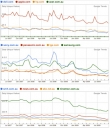
One of my clients attended a Social Media Marketing forum at Deakin University recently. He was surprised just how out of touch most marketing and business managers are with this medium as a means for promoting a business. The questions being asked were about how to control staff access to social media or how to post their brands’ advertising and collateral across the newer platforms.
This top down approach where management dictates the agenda no longer cuts it.
In the same way the Internet has empowered the public to access their news, music and entertainment whenever they want, not when the distributers choose to roll it out, Social Media is taking the online quest for information about products and services away from publishing and brand sites. Social Media is creating a vibrant forum for conversation about products, services and brands beyond the direct control of a company’s sales and marketing force.
The statistics show the rapid pace of change of where people are going online in search of information of all kinds.
Trend away from website visitation to Social Web
Google trends show over the last 2 years a significant decline in visitors to brand and media sites.

Boom in Social Media and content sharing
More people are seeking and sharing what they want online.

It’s no longer enough to have a brochure style website, you can no longer sit back while your salesforce distributes your marketing collateral and your marketing department runs ads telling the masses how good you are.
Everyone in your organisation and every one of your customers is now a prospective advocate for your business. Or they might be saying your competitors are better. You can’t control the conversation, but to compete today you need to formulate a social media strategy, coach your staff, create content of use to customers and prospects and contribute to the conversation in an open and honest way.
Small can succeed in retail against big budget incumbents
Growing up in sixties suburban Sydney the most exotic cuisine my family was familiar with was cabanossi on Jatz crackers. Father felt like a Tooheys or two and good on my mum, she knew Tip Top was the one. Fortunately, forty years of immigrant mothers from around the globe have helped expand Australians’ culinary horizons.
Family businesses show how to be a challenger brand
At the Food and Wine Expo held by Family Business Australia in Sydney in November, the influence of Nonnas was evident as third generation business owners showcased their gourmet products. Their time has come, statistics show the trend to gourmetisation of the Australian shopping basket has now reached beyond the specialist deli and ethnic store to the Supermarket.
Unlike most trade shows, what struck me at the FBA event was the friendly atmosphere, no hard sell, just an infectious enthusiasm for the products these families have been creating for years and a desire to share business stories. From the small catering company making their first tentative step into retail, through to a food service business that gave up on retail in the 70s, one story is common: the bigger challenge isn’t getting onto the shelves of Coles and Woolworths, it’s how to stay there and make a profit.
Two family businesses, Taylors Wines and Coopers Brewery, are testament to the magic ingredient for success in the retail market – the power of building a brand. Branding is what puts the power in your hands, not the channel’s. Building a brand takes more than one-off promotions, or advertising that simply says you are in store now, or paying for inclusion in catalogues with discount offers. To build a brand you need to invest in marketing over time to establish the brand story and your values.
Brand marketing delivers these benefits over a me-to sales approach:
Product
Easy to copy
A commodity
No special distinguishing features
What a factory produces
Shorter life cycle
Addresses functional needs
No identity
Products compete on price
Brand
Hard to copy
What consumers buy
Emotional fit with consumers
Level of confidence and trust
Longer life cycle
Addresses emotional needs
Have personalities
Brand can demand a premium
Fosters Group has destroyed shareholder value to the tune of hundreds of millions of dollars over the last decade by mismanaging the marketing of some icon wine brands, from Lindemans and Penfolds to Seppelt and Tollana. Meanwhile, family business Taylors Wines has stayed true to its five decade history with consistent product, packaging and promotion.
Nick Levy, the marketing manager at Taylors, wouldn’t dream of throwing out the heritage of this family business, whereas corporations time and again allow each new brand manager to make their mark by changing the label their customers know and love to chase a fleeting fashion. Often the new look comes at the expense of long won recognition. Similarly, downgrading a product’s quality to maintain margin or constantly price-cutting to gain share ultimately destroys brands.
Yes, we live in a time where the pace of change is so much faster, yet taking the time to establish what you stand for, developing a dialogue with your customers and creating a sense of authenticity are increasingly valuable tools in a world where global producers can pitch to your retailer with a cheaper knock off product as soon as you leave the buyer’s office.
If you value what you have to sell, it pays to remind your customers as often as you can of why they should love you. Now you can afford to. New technologies, data intelligence and eCommunications now enable challenger brands to compete successfully with the large advertising budgets of corporations.
So find the true benefit of your offer and actively market it. As Revlon said, having built an empire with brand marketing, “we don’t sell cosmetics, we sell hope.” Worked on my mum.
This article first appeared in Business Insight
Leave traditional marketing to your competition... Now there are smarter ways to connect

To make the most of a marketing budget there are now smarter ways to integrate social media and search optimisation.
Many struggle to keep abreast of the changing landscape, while companies that take advantage of 'eCommunication' will benefit from increased efficiencies, decreased costs and improved customer engagement.
Traditional marketing funnel view of prospects...

Medium and message is aligned to where the audience is in the funnel, information is controlled by the brand.
The decision making process in an e-connected era...
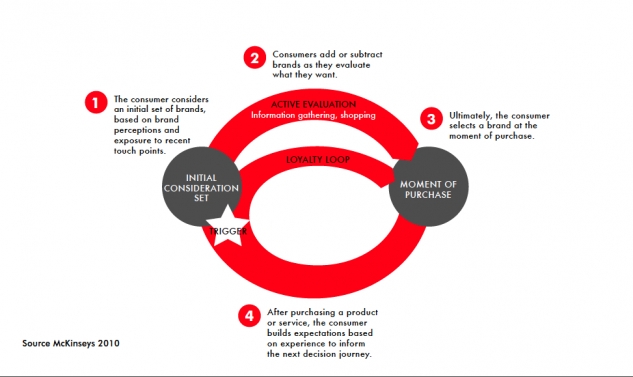
Time to replace the old touchpoints with a new mix
The journey is no longer simply linear, the customer now has control over what they see and read on any subject. The audience enters, leaves and re-enters the decision making process more often, with more access to information from more sources when they want it.
Your eCommunications checklist
Whether your business is B2B or B2C, it’s no longer enough to think in the linear way of out of home, in store (channel), at home. Here is a new set of options which UNO utilise to supersede or integrate with existing programs:

Are you a retailer or publisher, advertiser or educator? The Internet has blurred the lines.
There used to be clear delineations between product manufacturer/creator, channel/distributor, retailer and end consumer.
Enabling this traditional marketing model there was mass media. Advertising mad men then helped consumers to embrace the products and services they hadn’t heard of and didn’t know they needed. Now the interconnections of the Internet have transformed the sequence of commerce and marketing.
Customers are now researching every category online
People have a need? They research online for themselves in the safety of their own home, avoiding the charms of advertisers and brand collateral, packaging and point of sale merchandising. The empowered consumer accessing product knowledge on the web via forums, chatrooms and reviews is beyond the charms of the seasoned salesman on the shop floor.
Even more disconcerting for the traditional retailer of a product or service is the emergence of the medium no longer just being the message, but now a vertically integrated marketing model.
From books to money management, every category has been turned inside out and upside down. What was linear, is now a 3D demand and supply freeform organism.
Consider books. A hard back would come out, early adopters would pay a hefty premium, soft cover would follow, trends would be noted, popular titles would have second and third editions printed and distributed, blockbusters would be advertised and the retailers would rake in the cash and the publishers would cover the costs of the many failures by most of their authors.
Then Amazon cut out the middleman, and now with the Kindle is changing the distance from content to delivery even further, you can now download and store a library of 3500 “books” on a device that is close to the price of a couple of hardbacks. So if there is no need to print and distribute, does the author deal direct with Amazon, seeing the retailer become the publisher?
Even services aren’t untouched by the digital revolution
Take for example Superannuation Funds. If you work you have one, no wonder there are thousands of funds competing for a share of 9% of your salary.
For Australian investors there used to be 3 Clayton’s choices, the choice you have when you don’t get a choice. If you were a blue-collar worker your employer put you into the Industry Super Fund that was created for your industry. If you were a public servant, you were automatically in your government fund. White-collar workers had a modicum of choice, the local Insurance salesman would flog a retail fund and benefit from the handsome commission and trailing fees.
Not any more. Super Choice means most can now choose their fund. Those who are motivated research online, in fact 50.6% do, whereas only 12% turn to newspapers and a mere 3% magazines. So while all those funds are spending hundreds of millions advertising in mass media, savvy investors that are shopping around are stumbling upon a vertically integrated model. Fairfax Digital owns InvestSmart, a licensed financial services business that bought Direct Access, which was a discount retailer of funds. Fairfax in its wealth and business sections publishes articles on super and investment. On the same pages are links and comparison tools branded InvestSmart. These tools and tips and comparison lists educate the Super Shopper. Then when they are ready to buy, fulfillment is just one click away for a fee a fraction of the traditional adviser model. So the publisher becomes the retailer.
So does all of this mean consumers are better off? The fastest growing and the biggest segment by value of the 1.4 trillion dollar Super category is DIY. Self Managed Super offers investors the allure of control. Pity the average SMSF underperforms the average Industry Fund and has higher costs, until someone challenges the model that is.
Whether you are a retailer or a service provider, a financial services business or a manufacturer, it’s now time to reappraise your marketing model before your competition beats you to it.

Marketers have spent the last decade watching Woolworths maintain dominance in grocery while Coles failed to focus on customer needs and treated suppliers with disdain. Under Wesfarmers things are starting to change, yet the biggest fight in retail over the next decade is more likely to be driven by a huge shift to buying online.

While Australia’s Westfield has over 30 years fine-tuned a profitable model to encourage a visit to the Mall, as therapy for the modern empty soul, the Internet is on the cusp of changing the behaviour of society in an equally profound way.
It’s already happening. In 2009 Australians spent $24billion on retail online according to research commissioned by eBay and predicts a 40 percent increase to $32.8billion in 2012.
Australia’s retailers are falling behind the rest of the world in grabbing a share of the online retail spend. "As Australian retailers struggle to build effective online presence, overseas competitors are taking advantage of the gap in the Australian market and are currently taking around 40 per cent of Australia's online retail spend," according to PayPal MD Paul Feller.
"There is a huge opportunity for retailers to capitalise on the growing online marketplace in Australia. In the last six months alone the average consumer spent $1,223 on online shopping, an increase of $130 from the second half of 2009."
So Westfield has to balance an online strategy with keeping footfall high in the malls to keep those retail tenants in biz. No easy task, now that broadband speeds and speed and reliability of delivery through the mail are narrowing the gap between online purchase and the wardrobe.
Who shops online?
My daughter buys most of her clothes online from the US and UK for a fraction of local prices, my son buys his music and sound gear from all corners of the world and Amazon keeps my partner well read. Online purchases of all sorts of items will become the norm, especially as the ways to enhance the shopping experience online grow.
In the past you would see the latest fashions in a magazine spread, be exposed to an ad on TV with Megan Gale for David Jones and go the mall to try it on. Now the whole experience can be completed online. The Ceros platform is being used by the likes of Sears, Tesco, Virgin and IKEA to show product and close a sale using a rich media eMagazine. Have a look. We’re already using it to help our challenger brand clients leave their competition behind.
Read MoreMarketing tips for fund managers
Fund managers can make more money by marketing. The trick is to know what marketing is exactly...
I have a passion for following fund managers’ performance and comparing how they stack up against their investment philosophies. There are a handful of fund managers who stick by their principles and deliver above average results through the ups and downs of the markets. What surprises many managers is that investment doesn’t always come flooding their way when they are doing better than the index. There are plenty of examples where poor performing funds continue to dominate in the competition for FUM.
It’s not enough to rely on BDMs and the distribution and sales channels; every fund is out there building relationships with the instos and advisers. The commercial reality is rooted in human nature; ultimately the salesmen who managers are relying on to recommend a fund will go for the easy sell. And as we’ve seen, performance can’t be the only draw card or there wouldn’t be 19,500 funds on the market where the biggest generally aren’t the best. It would be a mistake to think the end of commissions will result in a rush to quality, inertia and confusion will see to that.
It’s time the better managers tried something new to most in the industry. It’s what’s been honed and crafted by the world’s most successful companies, from Apple to Armani, Mercedes to Mars: it’s marketing. In a world of multiple choices, marketing is one of the few tools that can make a significant contribution to the success of a business.
The financial services industry still confuses sales and distribution for marketing
It isn’t. Marketing takes the ball the first fifty metres and sales kick the goal. Then it’s marketing that continues to remind investors why they made the right decision choosing your fund, so they’ll stick by you through the inevitable bumps and falls. And invest with you again and again.
In the words of Wikipedia, marketing is the process by which companies determine what products or services may be of interest to customers, and the strategy to use in sales, communications and business development. It is an integrated process through which companies create value for customers and build strong customer relationships in order to capture value from customers in return.
Manage the image you create for your brand and how you promote it
From product design and the language you use, your logo and stationery, the look and imagery in brochures and PDSs, the content and design of e-newsletters, what is on your website and how it is presented, to advertising and sales collateral. When every part is working together in a co-ordinated fashion the whole adds far more value to the business than the investment in the parts. And just like investments, managed well marketing delivers compound returns.
Over the years I’ve found integrated marketing works just as well for financial institutions as it does for baked beans. Research by the School of Management and Finance, University of Nottingham showed back in 1998 the similarities emerging even then between consumers’ responses to financial services ads which featured the same cues as ads for fast-moving consumer goods (FMCG) and the influence on subsequent purchase decisions.
Put simply, when it comes to proven ways to make money, fund managers can get a healthy ROI from marketing. For evidence, they just have to ask about the results of my many marketing experiences of 30 years, from banks to baked beans.
Signs of the times... who has the time?
Outdoor advertising is diminishing in effectiveness, like many traditional mediums
Not surprising when you think about the increasing clutter advertising billboards have to compete with for attention.
In the Drive section of the SMH the other day one motoring journo observed: “I went to a suburban shopping district and counted 19 road signs clustered around the first intersection. There were 55 road information messages in about 100 metres. Even when travelling at 40km/h you are left with just nine seconds to read them". In the book Traffic, Tom Vanderbilt states the average driver must process 1340 pieces of information every minute.
So recently when a client asked UNO to review their annual advertising media budget we weren’t too keen to recommend continuing to spend several hundred thousand dollars for one poster above the M4.
Old habits die-hard, the CEO drives to work each day and passes that one sign. We couldn’t convince management that for about 20% of the cost of that one sign they could develop an ongoing relationship with their customers using the latest Web2.0 technologies and build a valuable database for future use.
While traditional media companies like Eye Corp continue to sell posters, a medium that hasn’t changed for a couple of centuries, newer more effective alternatives are emerging. (When the price is right.) ROI marketing starts with understanding the real stats.
Innovation in signage
Recently Ryan Simpson of Val Morgan showed me the latest research on their innovative take on signage, large video screens in shopping centres.
While I always take statistics with a grain of salt, the figures reflect the relationship between clutter and proximity to where the purchase can be made. Despite the amount of billboards, busbacks and taxibacks that shoppers must have passed on their way to the shops, almost 50% say they didn’t notice any advertising. 30% remembered noticing billboards, whereas this new moving screen medium within shopping centres was noticed by over 70% of the 1,000 people surveyed by Nielsen research.
Pity I didn’t have those sorts of stats on hand when I tried to talk that client out of spending a large chunk of their budget on that one sign.
Bigger ad budgets usually mean greater waste
Marketers don't always get what they pay for. I recently met with the new regional head of one to one marketing of a world leading brand. One to one is their fancy term for online. This new manager has been brought in from the USA to determine how the millions of dollars they spend annually in this region can deliver a better return.
Mid size companies can learn from the mistakes of larger marketers with larger budgets. Some of the areas of waste this expert has identified in just a few months are listed here:
Marketing budgets managed within silos is inefficient
Some products have budgets too small to make any impact, while others spend more than necessary because they have a larger allocation. Simply by adding an overview of expenditure across the portfolio would deliver a win win result.
Too many contracts with too many large agencies can drive a big spending approach. Marketing managers with little experience are often given average strategic advice and average creative executions. Large agencies are inclined to overspend on media exposure, (with commissions it's an easy earn).
Set marketing KPIs upfront
Smarter marketers know investing in more management time upfront determining objectives and KPIs, with strategic intellect and strong creative can mean a much smaller media spend can deliver greater impact, more leads and higher conversion rates. There is also an inevitable diminishing return factor from spending more, if someone sees your ad two or three times and still hasn't bought, spending more to show them the same proposition four or five times is simply a waste of money.
There is value in retained knowledge
Years of collected data, research results, campaign learnings and customer databases are often ignored with each new project. Every campaign can and should add incremental value to the next. Take a test and learn approach, rather than a big spending one-off hit. This is one of the fastest ways to implement ROI marketing.
Fortunately for my mid sized clients, I've found over the years insight led creative marketing can punch above it's media weight time and again.
Read MoreGM a victim of launch and leave
For General Motors, big has not proven to be better. From 50% market share to 20% and bankruptcy in just 40 years has partly been blamed on an inability of management to move with the shift from big gas guzzlers to smaller cars. The disastrous purchase of Hummer in 1999 showed how recently GM thought big still had a big future. Time has proven there were only a few big spenders like Renee Rivkin who bought these massive buckets of bolts, obviously not enough to pay the massive borrowing costs.
Less obvious to the public, and of more interest to marketers, are the views being expressed that a lack of advertising support has played a very significant role in the rapid market share loss to the Japanese car makers.
One example was the surprisingly upbeat statements by the head of marketing of GM, he is excited by the prospect of having less brands to support with his marketing budget. With the jettisoning of divisions like Pontiac, he'll be left with just four brands to promote, including Chevrolette and Cadillac. This he trumpets will give him a chance to compete with the same ad budget as Toyota.
In an obituary of the once market leading General Motors, The New York Times blames management for a failure to support it's product with advertising.
Advertising works, The New York Times says so
It points out GM finance staff wrestled with product developers and marketers, thus causing GM to fall victim to a practice called launch and leave - that is, putting product on the market, then failing to support them with advertising.
As someone who has played a part in helping numerous businesses grow share by using smart, creative advertising, this is a particularly public example of the consequences of not believing in the power of marketing. If you ever have to justify to management the wisdom of investing in advertising, when so many accountants seem to view it as a discretionary cost, use this following quote from a past executive of GM who was part of the team that created the successful Pontiac GTO in the 60s and wrote the book about it Glory Days...
Image is everything in building brand equity
Nobody gave any respect to this thing called image, because it wasn't in the business plan. It was about "when is it going to earn a profit?"
As the New York Times points out, over the years the marketing skeptics at GM became practiced at the art of explaining their problems, attributing blame to everyone but themselves.
Read MoreIt pays to trust people with passion
In the last week a visit from a chimney sweep and a conversation with a successful Australian manufacturer reminded me of the value of passion in business.
I was surprised when the chimney sweep asked when was the last time my chimney had been cleaned. Annually didn’t make sense to him judging by what he saw with his fancy mirror... unless I burn 20 tonnes of wood a year, which I don’t. I was quickly impressed by his enthusiastic run down on the finer points of proper chimney maintenance. This man has been cleaning chimneys for 27 years and was still getting a buzz from helping people solve their dirty flue problems, he described the joy solving more difficult challenges and leaving customers with fires that draw like new. His fee was no more than the company that has under serviced us over the last few years.
Whatever service you need, find a practitioner who is passionate about what they do
One of my long standing clients, going on nine years now, makes plantation shutters. Marion Mikkelsen of Open Shutters is passionate about her product, and has built a brand over this time that has proven resilient against the onslaught of cheap Chinese imports. She is so passionate every aspect of her business is constantly reviewed with the objective of constant improvement. She refuses to compromise, so instead of cutting corners to save costs this business runs on a successful program of creative thinking, R&D, staff training and manufacturing innovation.
This passion shows in her product, which my wife thought was the best when she did her pre-purchase research for our home. It was only a few years later I coincidentally won Marion as a client... it is great to be able to market a product you’ve bought yourself.
Why do so many business people mistrust each other?
Over 20 years this pioneer of timber shutters in Australia has led with product innovation and with UNO’s marketing help driven the growth of the category. Yet Marion lamented this week how it’s only after many years her distributors are beginning to trust what she says about her product and her overarching belief in the necessity to fulfill the expectations of consumers. How could so many small business owners not recognise the genuine passion displayed by Marion?
I shouldn’t be surprised, I often find business prospects are cynical of what I have to say about how smart marketing can help their businesses succeed. I’m passionate about what I can do to help people, however it’s even harder to be believed when I work in an industry that the public constantly ranks at the bottom of the trust table alongside used car sales and real estate agents.
Read More



Scan the QR code for our contact details.
Download the Neoreader app.
© COPYRIGHT 2013 UNO marcomms Privacy